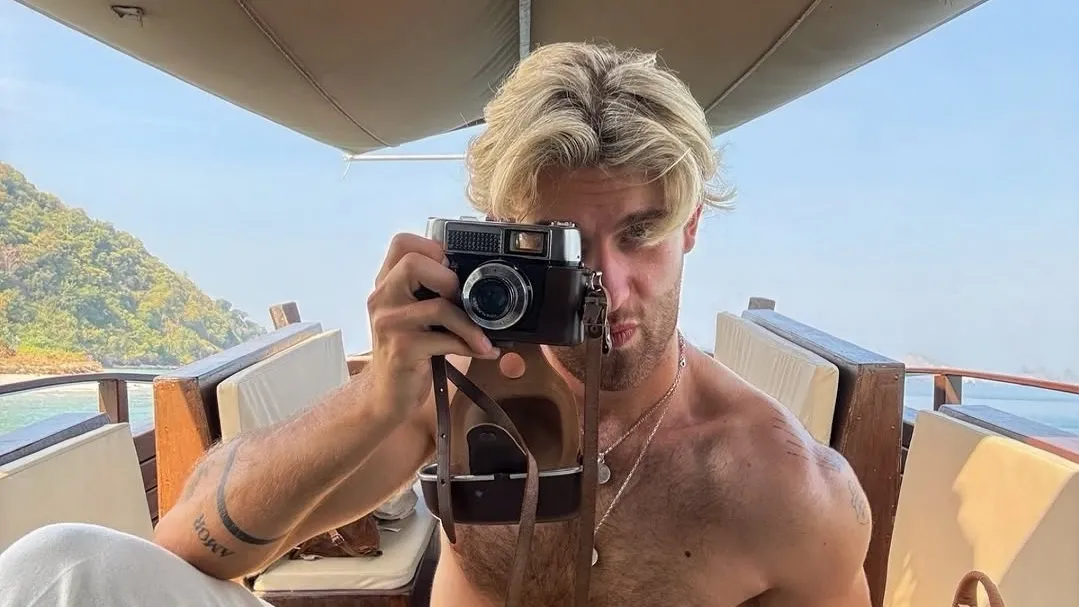November 3, 2010
High-End Tourism Comes to Vieques, Puerto Rico
Robert Doyle READ TIME: 5 MIN.
VIEQUES, Puerto Rico (AP) - Not long ago, while working for star chef Alain Ducasse in New York, chef Dagan Lynn heard the restaurateur's group planned to open a Caribbean outpost of his Mix restaurant.
"I remember thinking: 'Where is this - Vieques?'" he recalled.
Lynn has since updated his knowledge of geography. He is now the executive chef at Mix on the Beach in this island off the eastern coast of Puerto Rico. He and his staff turn out plates of tomato-watermelon gazpacho and peekytoe crab salad not far from where the U.S. Navy used to practice amphibian landings.
The restaurant, in the new W Retreat and Spa that opened in April, is part of Vieques' evolution as a destination on its own. Vieques has always been a day trip and weekend destination for Puerto Ricans and intrepid tourists willing to rough it. But the departure in 2003 of the U.S. Navy - which closed down a training base that took up two-thirds of the island's acreage - led to a land rush as visitors bought vacation homes and set up bed-and-breakfast lodgings.
"You saw people mobbing the building supply stores," said Andy Plesser, a New York public relations executive and video blogger. He has owned a home in Vieques since 2004 and recently launched a Vieques video blog, http://www.vieques.tv.
The land rush settled down due to tight local building codes - it took Plesser three tries to buy a house - and the onset of recession. But the opening of the 150-room W resort, in what had been a Wyndham hotel, doubled the number of rooms available in the island and is expected to attract a more upscale crowd.
There is now air service by a half-dozen airlines making the 20-minute flight from both the international airport in San Juan and the regional airport in Isla Grande. The latest carrier to land on Vieques is St. Croix-based Seaborne Airlines, which began flights from Isla Grande in March.
With improved air links, more tourists are treating Vieques as a stand-alone destination, not just an extension to a Puerto Rico vacation.
"The people who come here want to be here," says Jonathan Heath, general manager of the W hotel. "They don't just stroll by and say: 'Oh, look, there's Vieques.'" When the hotel opened during the Easter holidays, it reached 90 percent occupancy, said Heath; at the start of the low season in May, occupancy was around 53 percent.
Air passenger traffic to Vieques rose 40 percent in 2008, then dropped 3.5 percent to 20,759 in 2009 during the recession, according to the most recent data from the Federal Aviation Administration. But that's still a 75 percent increase over the 11,884 passenger boardings in 2004, the first year after the Navy's departure - and doesn't count the travelers who arrived on the ferry from Puerto Rico or on private boats. The ferry remains the main link between Vieques and Fajardo, on Puerto Rico's northeast coast, with several roundtrips daily for the hour-and-20-minute ride, and a one-way $2 fare.
Once on the island, tourists find Vieques still retains some of its frontier vibe. Wild horses roam and signs warn visitors away from beaches still being cleared of unexploded Navy ordnance. Some beaches still carry the code names assigned by the Navy during exercises, such as Punta Arenas (Green Beach), Playa Caracas (Red Beach) and Playa la Chiva (Blue Beach).
While the roads to Blue and Red Beach have been paved recently, many fine secluded beaches are accessible via dirt roads that require all-terrain vehicles. The W arranges rentals equipped with "escape kits" of beach gear and a picnic lunch for its guests, but there are also local rental agencies. Beyond the beaches, the island has low-key culture and nature attractions including a Spanish colonial fort in the capital of Isabel Segunda and the bioluminescent Mosquito Bay - considered one of the brightest in the world.
The influx of visitors has led to an increased interest in conservation, especially efforts to protect the bay. The Vieques Conservation Trust organized a symposium in 2009 that brought together scientists and politicians; another will be held at the W this fall.
"We need to keep moving that rock uphill," said Douglas Reese, a Trust board member. The bay is a big visitor draw, but that has to be balanced with conservation, he said.
The trust maintains a small museum in Esperanza with indigenous artifacts and exhibits on marine life and conservation. The group also organizes hikes to archaeological sites, bird watching trips and is trying to set up tours to observe endangered leatherback turtles as they come ashore to nest, said Mark Martin Bras, a director of the trust.
"Vieques is just up and coming," said Martin Bras. "The people who come - pretty few leave disappointed."
The profile of visitors is changing, said Reese, who runs a local bed-and breakfast. Tourists are staying longer and making repeat visits. He estimated 45 percent of regular repeat visitors in the winter now stay two weeks or more. According to the locals, the majority of guests come from the Eastern U.S. and Puerto Rico. Vieques had been drawing European visitors, especially Spaniards, but the euro debt crisis has put a dent on those crowds, said Plesser. Reese says he counsels callers making reservations to moderate their expectations. Nightlife is limited to a few local bars and restaurants; Heath says there's no casino in the plans for the W. Current options for drinking and dining include Next Course for dinner and Duffy's for lunch along El Malecon in Esperanza, and El Puente, a great bar hangout in Isabel Segunda.
There is little danger of the island turning into a spring-break destination. Development will be limited, since most of the land remains in government hands, noted Plesser. The Navy land has been transferred in part to the U.S. Department of the Interior, and partly to local and federal authorities until the Navy finishes cleaning up.
Visitors come for the beaches, nature and the laid-back vibe, said Plesser, who rents out his house during down times. They are "people who like nature, who like the beach who like a low-key kind of vacation," he said.
___
If You Go...
VIEQUES: http://www.viequestravelguide.com and http://www.vieques.tv/
VIEQUES W HOTEL: http://www.WHotels.com/Vieques. Rates vary; deals currently advertised range from $229 through $399 a night, depending on package extras, room and dates.
VIEQUES FERRY INFORMATION: http://www.vieques-island.com/viequesferry.shtml. Round-trip service several times daily; $2 one way. The ferry has a reputation for sometimes unreliable service with delays; arrive an hour early as a ticket does not guarantee space on the ferry.
VIEQUES AIRLINES: Vieques is served by several airlines, including Seaborne, http://www.seaborneonline.com, and Vieques Air Link, http://www.viequesairlink.com. One-way fares from San Juan to Vieques range from about $65-$95.
Long-term New Yorkers, Mark and Robert have also lived in San Francisco, Boston, Provincetown, D.C., Miami Beach and the south of France. The recipient of fellowships at MacDowell, Yaddo, and Blue Mountain Center, Mark is a PhD in American history and literature, as well as the author of the novels Wolfchild and My Hawaiian Penthouse. Robert is the producer of the documentary We Are All Children of God. Their work has appeared in numerous publications, as well as at : www.mrny.com.







